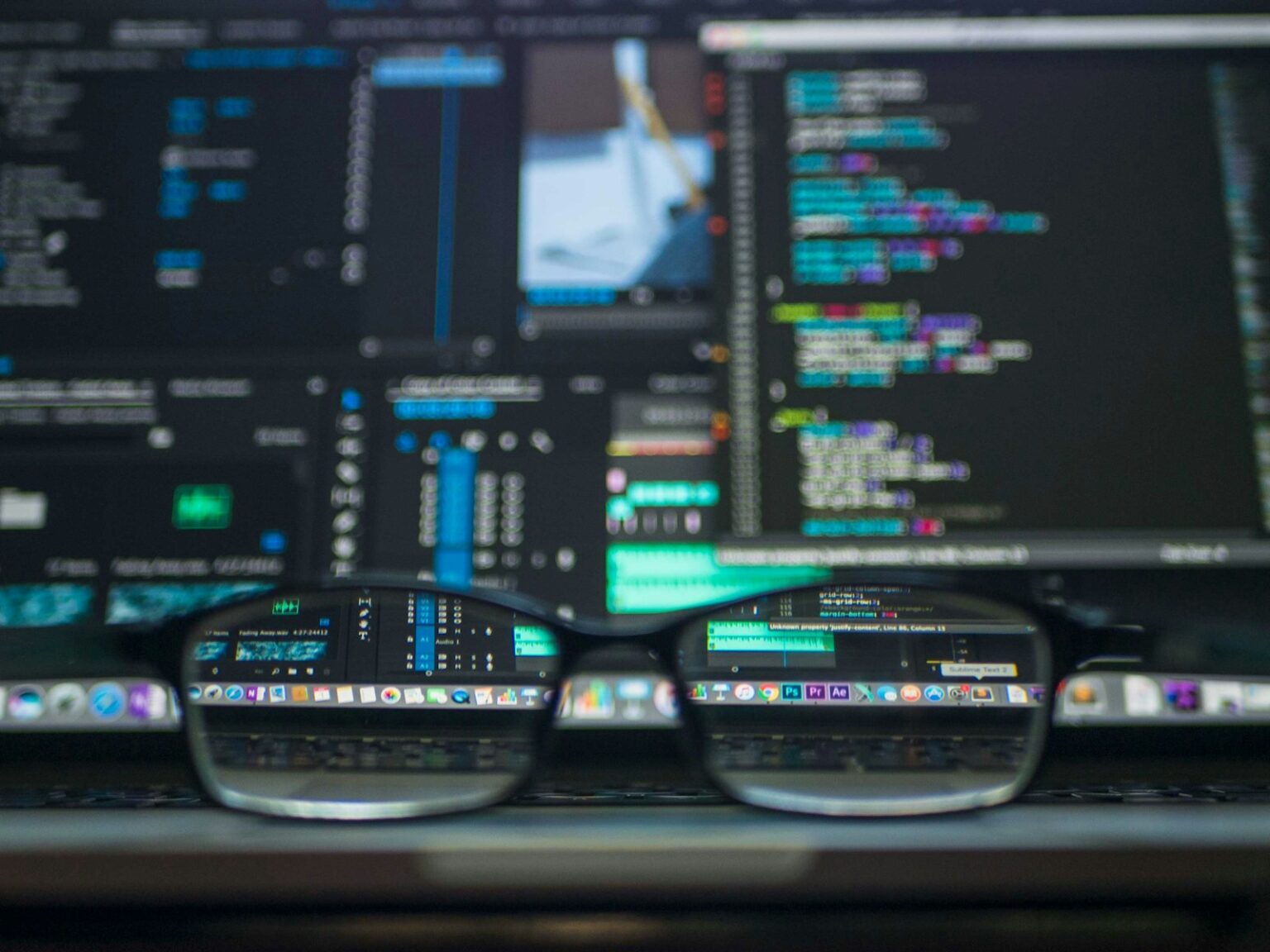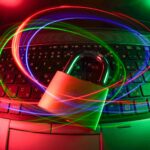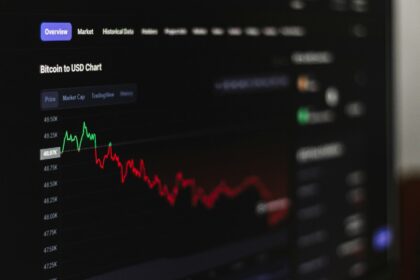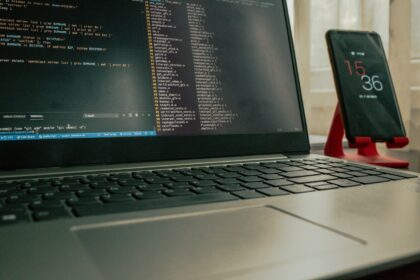Welcome to the digital world, where every action leaves a digital footprint. This footprint, known as Big Data, is a vast collection of data. It’s like a massive library filled with books about us all. Cybersecurity acts as the security guards for this library, using data to predict threats.
This raises important questions about how this information is used. Is it fair? Is it right? We’re diving into the complex world of Big Data and the Ethics of Cybersecurity. This topic impacts everyone who uses the internet.
In this article, we’ll explore the relationship between Big Data and cybersecurity. We aim to simplify complex concepts without using jargon. Our goal is to understand how our data protects us and the ethical considerations involved.
First, What Exactly is Big Data?
“Big Data” is a term you often hear. It sounds complex, but it’s straightforward. Think about your daily activities. Every email, social media post, and online purchase creates data. Multiply this by billions of people worldwide, and you get an unimaginable amount of information created every second.
Experts describe Big Data using a few “Vs”. Let’s break them down simply.
Volume: The Sheer Size of It
The amount of data is massive. It’s not just a few files on your computer. It’s more like all the sand on all the beaches in the world. Companies need powerful systems to store it all. This sheer volume is the first “V” of Big Data.
Velocity: The Speed of Creation
Data is created at an incredible speed. Think about a trending topic on Twitter. Thousands of tweets are sent every second. Financial markets generate data with every trade. This constant flow is the second “V”, Velocity.
Variety: The Different Types of Data
Data isn’t just text and numbers anymore. It comes in various forms. Photos, videos, voice recordings, and social media posts are just a few examples. This is the third “V”, Variety. It’s like a giant puzzle with pieces of all different materials and shapes.
Veracity: The Trustworthiness of Data
Not all data is accurate. Some can be messy, incomplete, or wrong. Ensuring data reliability is a huge challenge. This is Veracity, the fourth “V”. It’s about sorting truth from noise.
Value: The Point of It All
What’s the purpose of all this data? It’s to find value. Companies analyze it to understand customer behavior. Scientists use it to find cures for diseases. Cybersecurity experts use it to protect our digital lives. Finding insights in this mountain of information is the final “V”, Value.
So, Big Data is a massive, fast-growing, and diverse collection of information. It can be analyzed to reveal patterns, trends, and associations. This is key in online security.
How Big Data Became Cybersecurity’s Best Friend
In the past, cybersecurity was akin to a castle guard. The guard would scrutinize each individual attempting entry. This method, known as perimeter defense, focused on fortifying a network with a robust firewall. Those with the correct password were granted access, while others were barred.
Yet, this traditional approach is no longer sufficient. Hackers have evolved, employing sophisticated tactics to breach defenses. They often exploit vulnerabilities from within, highlighting the need for a more proactive strategy. Big Data emerges as a critical ally, enabling a shift from mere gatekeeping to a holistic surveillance of all network activities.
Predicting the Next Attack
Imagine a detective analyzing past crimes to forecast future actions. Cybersecurity systems employ a similar methodology, leveraging Big Data to anticipate hacker strategies. This process, known as threat intelligence, allows for the development of more effective defenses. By analyzing historical data, systems can identify suspicious patterns, such as phishing attempts or unusual login activities.
Spotting the Needle in the Haystack
Consider David, an employee within a vast corporate network. His computer generates millions of logs daily, each detailing an event. This data is vast, making it challenging to detect anomalies.
One day, a hacker gains access to David’s account, initiating a series of suspicious activities. In the past, such actions might have gone unnoticed amidst the sea of data. Yet, a Big Data-driven system quickly identifies these irregularities, flagging them as anomalies. This swift detection enables the system to lock David’s account and alert the security team, thwarting the attack.
The Double-Edged Sword: Big Ethical Questions
The integration of Big Data into cybersecurity offers unparalleled protection. Yet, this power also raises significant ethical concerns. The very capability that enhances security—its deep understanding of user behavior—poses a substantial threat to privacy.
The Privacy Problem: Is Someone Always Watching?
Anna, a typical internet user, unknowingly contributes to a vast data collection. Her online activities are monitored by a cybersecurity firm, which aggregates her data from various sources. This creates a detailed profile, encompassing her personal life, interests, and financial status.
The firm justifies this surveillance, claiming it’s essential for detecting cyber threats. Anna, though, feels her privacy is being eroded. This scenario illustrates the “Big Brother” problem, where constant surveillance undermines individual privacy. It fosters a climate of fear, where people hesitate to express themselves freely, fearing judgment.
The Bias Trap: When Algorithms Discriminate
Algorithms are simply sets of rules followed by computers. We often view them as neutral and objective. They are just math, after all. But algorithms are created by humans, who carry biases, both conscious and unconscious. These biases can embed themselves into the algorithms.
Further, the data used to train algorithms can itself be biased. For instance, a security system trained on biased data will produce biased results. Let’s say a system is designed to predict if a person might be a security risk. It’s trained on data that historically shows more security alerts from a certain neighborhood. The algorithm might then learn to associate that entire neighborhood with high risk.
This could unfairly target an innocent person from that neighborhood, let’s call him Carlos. His online activities might be scrutinized more heavily. His job applications might be flagged for extra security checks. His loan applications might be rejected. He is being discriminated against by a machine, based on data that doesn’t tell the whole story. This is a critical issue in Big Data and the Ethics of Cybersecurity.
Here is a simple table to show how this can happen:
| Data Point (Seemingly Neutral) | Potential Biased Interpretation | Unfair Consequence |
|---|---|---|
| User frequently browses websites from a specific foreign country. | Algorithm trained on old data links that country to cyberattacks. | User is flagged as a “foreign agent” or security threat. Their internet access might be restricted. |
| User’s IP address is located in a low-income neighborhood. | Historical data shows more instances of online fraud from that area. | User is automatically denied access to premium financial services or faces higher insurance premiums. |
| User uses privacy-enhancing tools like a VPN or Tor. | System associates these tools with hackers and criminals. | User is put on a permanent “watchlist” for intense monitoring, even though they just value their privacy. |
As you can see, algorithms are not inherently fair. They reflect the data they are given and the goals of their creators. This can lead to a new form of digital discrimination that is hard to see and even harder to fight.
The Illusion of Consent and Transparency
When was the last time you read the “Terms and Conditions” before clicking “I Agree”? If you are like most people, the answer is probably never. These documents are often incredibly long, written in dense legal language, and almost impossible for a normal person to understand.
Yet, by clicking that button, we are legally giving companies broad permissions to collect, use, and share our data. This isn’t meaningful consent. It’s an illusion of choice. We need to use the service, so we click the button. We have no real power to negotiate. We don’t know what we are truly agreeing to.
Cybersecurity firms that use this data operate behind a veil of secrecy. They often claim that revealing how their algorithms work would help the bad guys. While there is some truth to that, it also means there is no transparency. We don’t know what data they have about us. We don’t know how they are judging us. We can’t correct errors in their data.
“We have created a system where we ask people to trade their privacy for a service, but we never clearly tell them the price. We hand them a 50-page contract for a digital life they don’t understand. This is not consent; it is compliance. The fundamental challenge in Big Data and the Ethics of Cybersecurity is to turn this compliance back into a genuine, informed choice.”
— Dr. Evelyn Reed, Fictional Cybersecurity Ethicist
Who Owns Your Data, Anyways?
This is a major question in our digital era. When you post a photo online, who owns it? You, the social media platform, or someone else? What about the data your car collects about your driving habits or your smart thermostat’s data on your daily routine?
The legal answers vary by country and are often unclear. Yet, the companies that collect data often act as if they own it. They use it for their own gain, including selling it to data brokers and cybersecurity firms. Trying to retrieve or delete this data can be a daunting task. This lack of control over our digital identity is a significant ethical issue. We become the product, not the customer, with our life stories turned into data points sold without our consent.
Finding a Path Forward: An Ethical Framework
Are we doomed to lose our privacy and freedom for digital safety? Not necessarily. The debate around Big Data and the Ethics of Cybersecurity is intensifying. People are demanding a more ethical approach. Here are some key ideas for a better cybersecurity framework.
1. Stronger Rules and Regulations
Governments are taking action. The General Data Protection Regulation (GDPR) in Europe is a prime example. It sets strict rules for data collection and use. It grants individuals rights like data access, correction, and deletion. It also requires companies to be transparent and obtain explicit consent. Such regulations can shift the balance back to the individual.
2. Privacy by Design
This concept is simple yet groundbreaking. Privacy should be built into systems from the start, not added later. It’s like installing fire sprinklers during construction, not after. Engineers and designers should consider ethical implications at every development stage. They should question the necessity of data collection and how to protect privacy while achieving security goals. This involves minimizing data, using anonymization, and giving users control over their information.
3. Human Oversight and Algorithmic Accountability
Algorithms should not make life-altering decisions alone. Human oversight is essential. A human should review decisions made by systems, like flagging someone as a security risk. This helps detect biases and errors.
We also need algorithmic accountability. Companies using these systems must be responsible for their outcomes. If an algorithm is discriminatory, the company should be accountable. Independent auditors should inspect these algorithms for fairness and bias. Transparency is key to understanding these decisions.
4. Empowering the User
We all have a role to play. We must become digitally literate. We should understand the value of our data and the risks of sharing it. We should demand simpler privacy policies and clearer controls. Supporting companies that respect privacy and boycotting those that don’t is important. Education is critical in driving change.
Conclusion: A Shared Responsibility
We stand at a critical juncture. Big Data presents us with powerful tools to enhance digital safety. It can thwart hackers, curb fraud, and safeguard critical infrastructure. Yet, this capability poses a risk to our core values: privacy, fairness, and freedom. The exploration into Big Data and the Ethics of Cybersecurity is fraught with complexities and hurdles.
The quest for answers is ongoing, with no straightforward solutions. It’s a delicate balance between privacy and security. We must ponder how much privacy we’re willing to sacrifice for enhanced security. And who should make these decisions? The path ahead demands a unified approach. Tech firms must adopt ethical design principles. Governments must establish and enforce just regulations. And we, as digital users, must become informed and active participants in the online community.
The aim is not to eschew Big Data for security purposes. It’s about harnessing it responsibly, ethically, and with respect for human worth. Achieving this equilibrium is the cornerstone of our digital future. This represents the pinnacle challenge of Big Data and the Ethics of Cybersecurity.
























